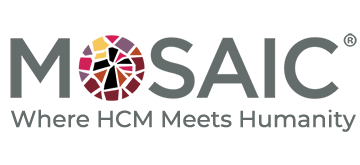Is your company culture driving sustainable success? In today’s rapidly changing business environment, a strong organizational culture is essential for more than just employee satisfaction—it’s a key strategic advantage. A thriving culture influences engagement, retention, productivity, and overall performance. At Mosaic Consulting Group, we understand that building and nurturing this culture requires a deliberate, expert-led approach. Our Culture Consulting Services are designed to align your HR strategies with long-term business goals, equipping you with the tools and insights needed to foster growth, innovation, and resilience.
What is Culture Consulting?
Culture consulting is about aligning the human side of your business—your people—with your strategic business goals. Mosaic Consulting Group empowers organizations by transforming HR strategies into key drivers for business success. We specialize in developing tailored solutions that cultivate thriving workplace cultures, setting a foundation for sustainable growth. Whether your company is experiencing rapid expansion or adapting to changing workforce demands, our services offer comprehensive, strategic support in the following key areas:
- Aligning HR Strategy with Business Growth: We ensure that your HR strategies actively contribute to long-term organizational success. Through careful analysis and strategic consultation, we align the goals of your human capital with the overall direction of your business, ensuring that both grow in tandem.
- Developing Talent and Leadership: The future of any organization rests on its ability to develop talent and foster strong leadership. We equip your teams to meet the challenges of tomorrow while building a strong leadership pipeline that drives sustainable, long-term growth.
- Optimizing Organizational Design and Change Management: As your organization grows and evolves, so must your structure. We prepare your company for these necessary changes, ensuring your teams remain agile and responsive to shifting market demands and workforce expectations.
- Enhancing Employee Engagement and Experience: Engaged employees are productive employees. We focus on improving the employee experience to foster higher levels of retention, productivity, and overall performance. Our services help you create a workplace where people feel empowered, valued, and ready to contribute to organizational success.
- Leveraging HR Analytics: Data is a critical component of informed decision-making. We help organizations use HR data and analytics to inform workforce planning, optimize performance, and make better strategic decisions that drive organizational success.
Why Culture is the Heartbeat of Organizational Success
A thriving organizational culture is the heartbeat of any successful business. It drives how employees interact with each other, approach their work, and align with the company’s mission and values. At Mosaic, we don’t just help you define your company’s culture—we help you build a strong, cohesive, and resilient workplace where employees feel connected and motivated. A robust culture not only fosters better performance and higher retention rates but also gives your organization a competitive edge in today’s dynamic marketplace.
By partnering with Mosaic, you’re not just refining processes; you’re shaping a workplace that is agile, resilient, and aligned with your business objectives. Our culture consulting services empower you to build environments where employees feel empowered, valued, and invested in the success of the company. This connection fosters innovation, enhances productivity, and positions your organization for long-term growth.
Aligning HR Strategy with Business Growth
Successful companies know that growth isn’t just about increasing revenue—it’s about creating an environment where every part of the organization contributes to overall success. At Mosaic, we help you align your HR strategies with your business goals to ensure that the HR function actively contributes to growth. This includes talent development, leadership coaching, and succession planning, all designed to create a strong leadership pipeline for the future.
When HR strategy and business growth are aligned, your organization becomes more agile and capable of adapting to shifts in market dynamics. We work closely with your HR and leadership teams to ensure that your HR strategies not only support but actively drive the achievement of your business goals.
Optimizing Organizational Design for Agility
As organizations grow, their structures need to evolve. Whether you’re scaling up or restructuring for greater efficiency, Mosaic helps you design an organization that is both agile and aligned with your goals. Our consultants work with you to optimize your organizational design, ensuring your teams and processes are adaptable to changes in the marketplace and evolving workforce demands.
We provide support through change management initiatives, helping you navigate structural changes while minimizing disruption to your workforce. The goal is to create a streamlined, flexible organization capable of responding to new challenges and opportunities with agility and confidence.
Enhancing Employee Engagement and Experience
Employee engagement is one of the most critical factors in organizational success. At Mosaic, we understand that when employees feel valued, they perform better and stay with your company longer. We help you create a culture of engagement that boosts productivity, drives innovation, and enhances the overall employee experience.
Our approach includes leveraging data insights and analytics to help you make informed decisions that improve engagement across the organization. By continuously assessing employee sentiment and engagement levels, we provide you with actionable recommendations that align with your business strategy.
Tailored Solutions for Unique Organizational Needs
No two organizations are the same, which is why Mosaic offers tailored solutions to meet the specific needs of your business. We offer a range of consulting packages, including comprehensive culture assessments, custom HR strategic roadmaps, and in-depth talent development strategies. Whether you’re navigating rapid growth or responding to shifting market demands, Mosaic provides the guidance and expertise needed to help you thrive.
Through our Culture Consulting Services, we work with you to identify gaps, bridge those gaps, and ultimately align your culture and HR strategies with your business goals. This holistic approach ensures that your culture becomes a driving force for success, rather than a hindrance.
The Value of Data-Driven Insights
At Mosaic Consulting Group, we recognize the value of data-driven decision-making. That’s why we integrate HR analytics and data insights into every aspect of our consulting services. From culture assessments to employee engagement surveys, we provide data-driven insights that help you make informed decisions and set strategic priorities.
Our culture assessments and surveys are customized to your unique needs, offering detailed reports and actionable roadmaps that help you implement effective changes. With our expertise, you can confidently align your HR strategies with your long-term business objectives, fostering a workplace that supports growth, innovation, and success.
Work with Mosaic Consulting Group
Building a thriving organizational culture isn’t a one-size-fits-all process—it requires careful consideration of your unique challenges, goals, and workforce dynamics. At Mosaic Consulting Group, we offer a personalized approach to culture consulting that helps you shape a workplace where business objectives and employee satisfaction coexist harmoniously.
Whether you need a free culture assessment or a custom strategic roadmap, Mosaic provides the expertise and support you need to create a resilient, engaged, and agile workforce. Let us help you transform your company culture into a powerful driver of long-term success.
GET STARTED NOW

